A year later: Trump’s role in US Capitol riot still being probed
A House investigation seeks to understand what the White House knew in the days before and after January 6.
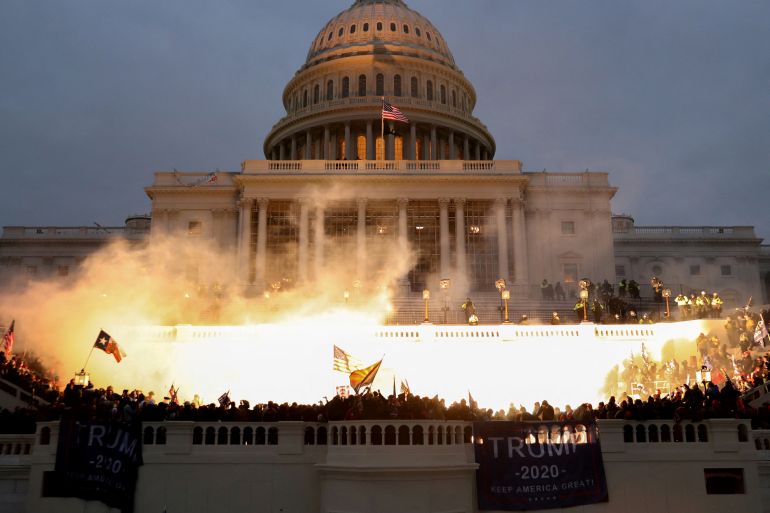
The United States is still confronting the truth of what happened in Washington, DC on January 6, 2021, when thousands of supporters of then-President Donald Trump stormed the US Capitol.
In the year since, more has been learned about Trump’s campaign to overturn the results of the 2020 presidential election and how it culminated in the Capitol riot.
Keep reading
list of 4 itemsFormer Trump aide Meadows halts cooperation with January 6 probe
Proud Boys members must face January 6 charges, US judge rules
How the US far-right threat has evolved since January 6
“There were several lines of effort to overturn the election,” said Representative Adam Schiff, a member of a special House of Representatives probe that has interviewed dozens of people and obtained thousands of emails, texts and documents related to January 6.
“There were, of course, the lies being promulgated by the former president, but also efforts with local elections officials and state legislators, efforts at the Justice Department and, of course, the violent attack on January 6,” Schiff told CBS on January 3.
The FBI has arrested and charged more than 700 people involved in the riot and the House committee has been investigating Trump’s role in promoting false claims the election was stolen and his attempts to block Joe Biden from becoming president.
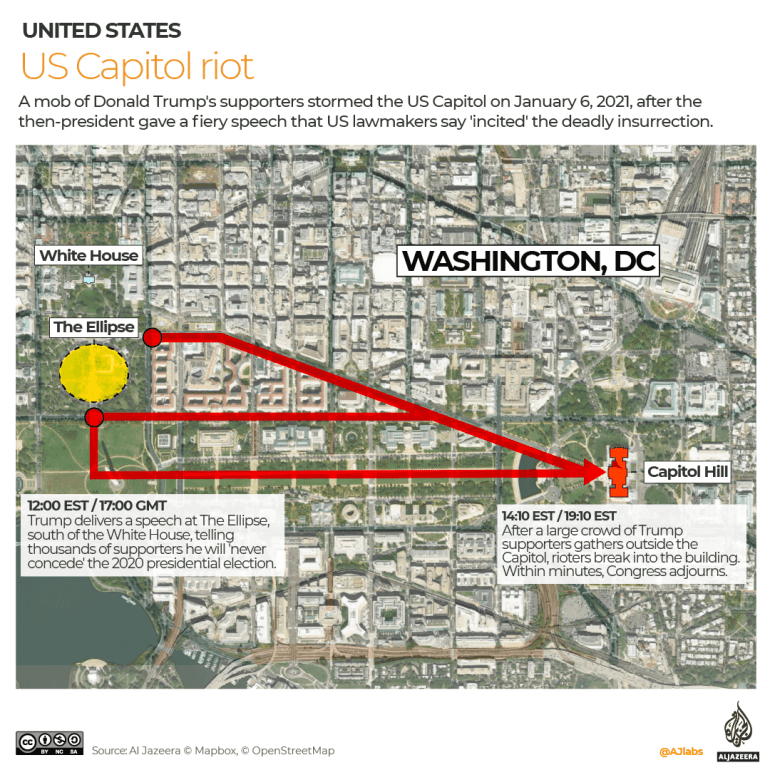
Biden was expected to address “the singular responsibility President Trump has for the chaos and carnage that we saw” at the Capitol in a speech on the first anniversary of the brawl, White House spokeswoman Jen Psaki said.
In the days and months since the riot, Trump has insisted he was innocent of any incitement, and that all he did was give a political speech at a peaceful protest.
Trump has suggested the violence at the Capitol was prompted by others and he has continued to claim – without credible evidence – the election was fraudulent.
“There was such love at the rally,” Trump said on Fox News seven months later. “They were there for one reason, the rigged election. They felt the election was rigged, that’s why they were there. And they were peaceful people. These were great people. The crowd was unbelievable. And I mention the word ‘love’. The love – the love in the air, I have never seen anything like it.”
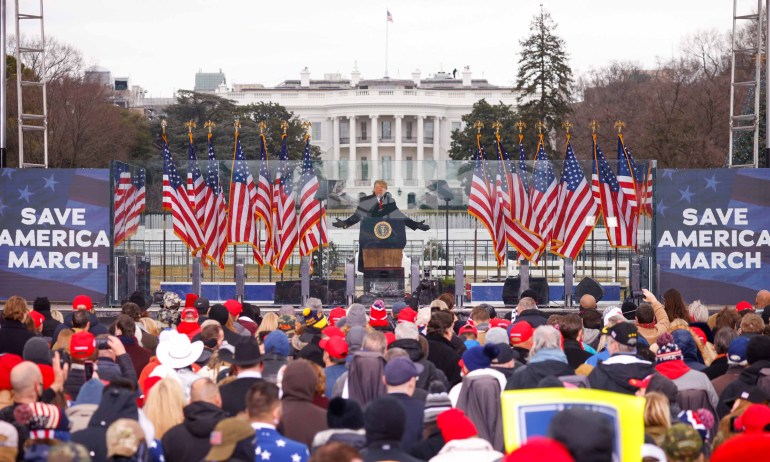
New information uncovered by House investigators has made it increasingly clear that Trump, his top aides and political allies intended to use the rally to halt Congress’s official count of the 2020 presidential election results on January 6.
On Tuesday, the select committee asked Fox News personality Sean Hannity, a longtime confidante of Trump to appear as a “fact witness”, citing communications “indicating you (Hannity) had advance knowledge regarding President Trump’s and his legal team’s planning for January 6th”.
In a letter asking Hannity to “voluntarily answer questions” the chair and vice-chair of the committee quoted text messages from Hannity telling White House staff January 5 “Im [sic] very worried about the next 48 hours.” And one January 6 advising Mark Meadows, head of the White House staff that Trump should “… Ask people to peacefully leave the [C]apit[o]l.”
‘187 Minutes’
In a fiery speech, on the Ellipse near the White House January 6, Trump had claimed the election had been stolen and encouraged thousands of supporters to march on the Capitol. The president then retreated to the White House where he watched events unfold on live television for more than three hours.
“The committee has first-hand testimony now, that he was sitting in the dining room next to the Oval Office, watching the attack on television as the assault on the Capitol occurred,” Representative Liz Cheney said on ABC.
“We have first-hand testimony that his daughter Ivanka went in, at least twice, to ask him to ‘Please stop this violence’,” revealed Cheney, who is the Republican vice-chair of the House committee investigating January 6.
At the same time, Trump’s senior White House staff received frantic texts from lawmakers and media allies desperately asking Trump to publicly call off the attack. Instead, for “187 minutes”, according to Cheney, Trump watched the violence on television, and phoned at least one Republican senator to urge a delay of the electoral count.
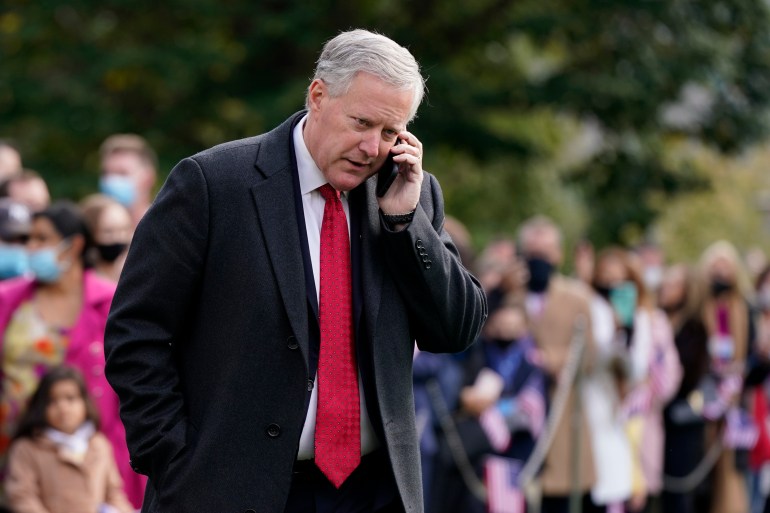
One text to White House Chief of Staff Meadows read: “POTUS has to come out firmly and tell protestors to dissipate. Someone is going to get killed”.
Meadows has partially cooperated with the House probe by providing texts and other material but has refused to be interviewed. The committee issued Meadows a subpoena and the full House has voted to hold him in contempt for failing to appear.
Willard ‘War Room’
The House is investigating reports that in the days leading up to January 6, Trump’s top political advisers – personal lawyer Rudolph Giuliani, political strategist Steve Bannon and others – assembled a “command centre” in a suite of rooms at the Willard Hotel, adjacent to the White House.
Bannon was deeply involved with Trump’s rally planning and had warned in a podcast, “All hell is going to break loose” on January 6, according to House investigators seeking to interview him.
“We are coming in right over the target. This is the point of attack we have always wanted,” Bannon said.
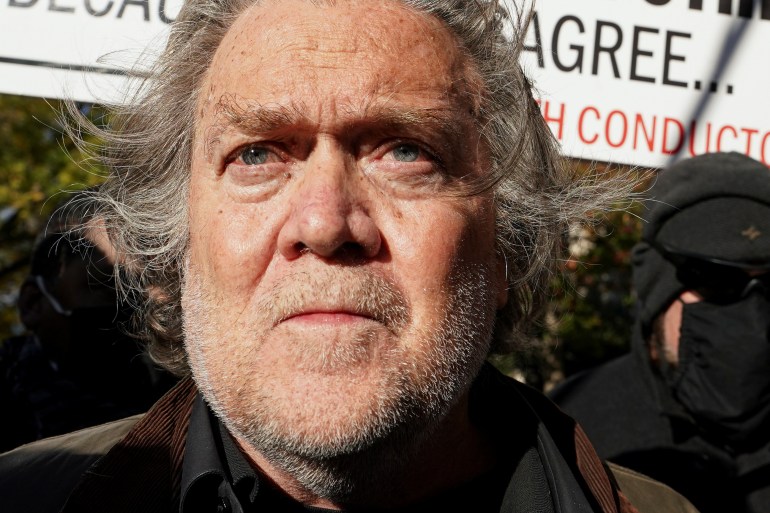
Bannon has refused to cooperate with the House committee and now faces criminal contempt charges by the Department of Justice – proceedings that are likely to take months in court.
The Willard “War room” group included lawyer John Eastman, a conservative lawyer who had outlined in an Oval Office meeting on January 4 how Vice President Mike Pence could use his authority to stop the congressional election count.
Pressure on Pence and members of Congress coincided with a push by Trump to get loyalists inside the Department of Justice to act against election officials in key states that had voted for Biden, including Georgia, according to an eight-month Senate investigation.
Insisting falsely he had won Georgia by “hundreds of thousands of votes”, Trump called Georgia’s top election official on January 2 to pressure him to change the state’s vote totals.
“The campaign of political pressure and manoeuvring failed, but the assault on the rule of law didn’t end. It escalated,” summed up Representative Bennie Thompson, the Democratic chairman of the House committee. “It resulted in a violent attack on the seat of our democracy.”